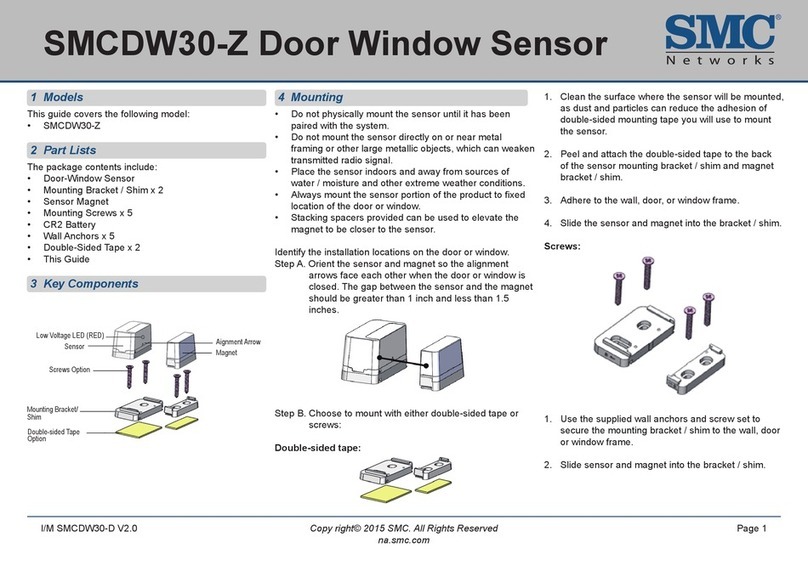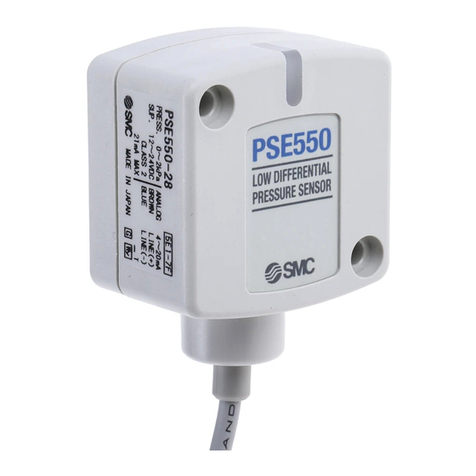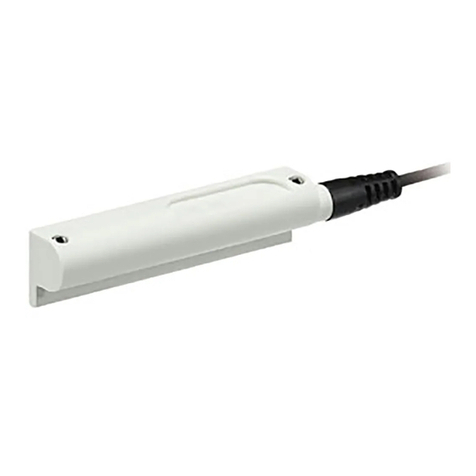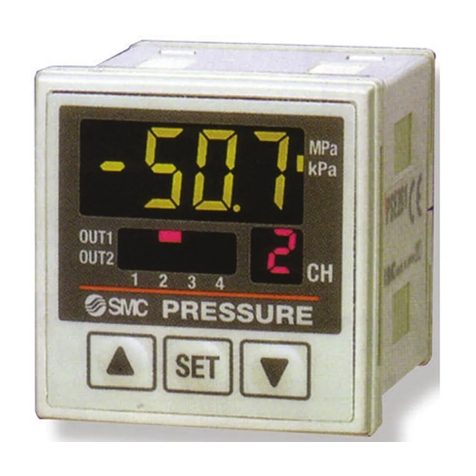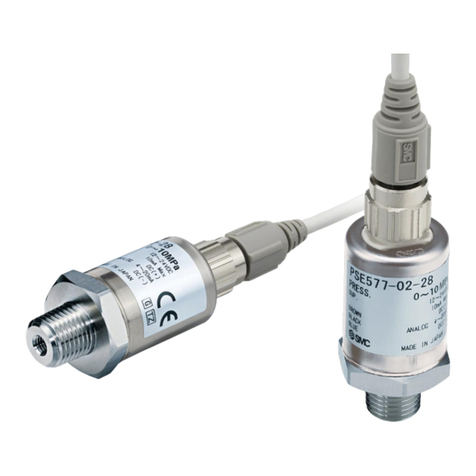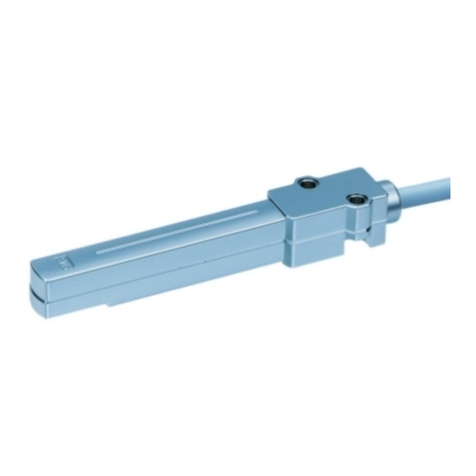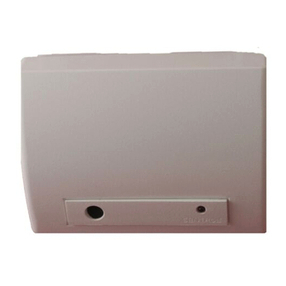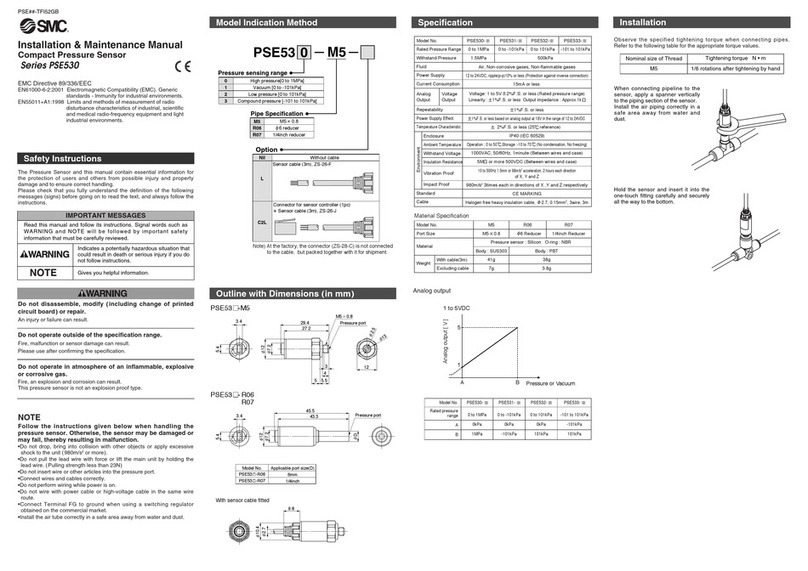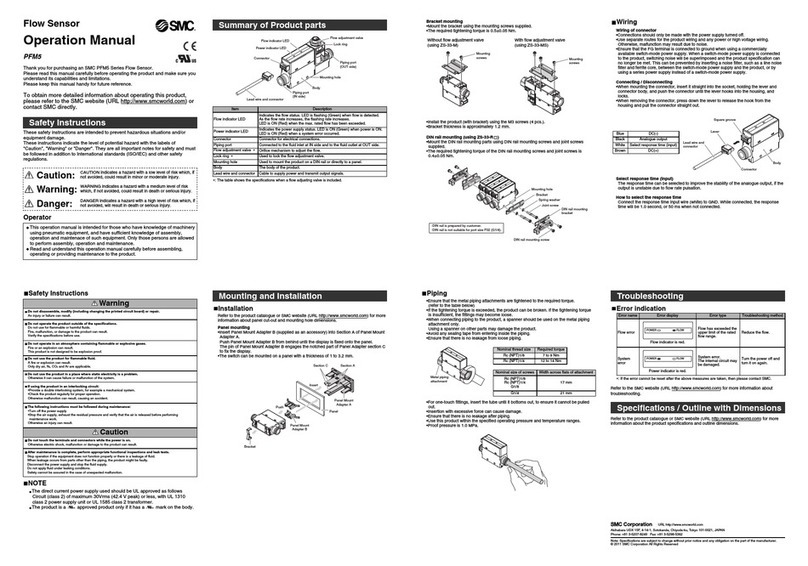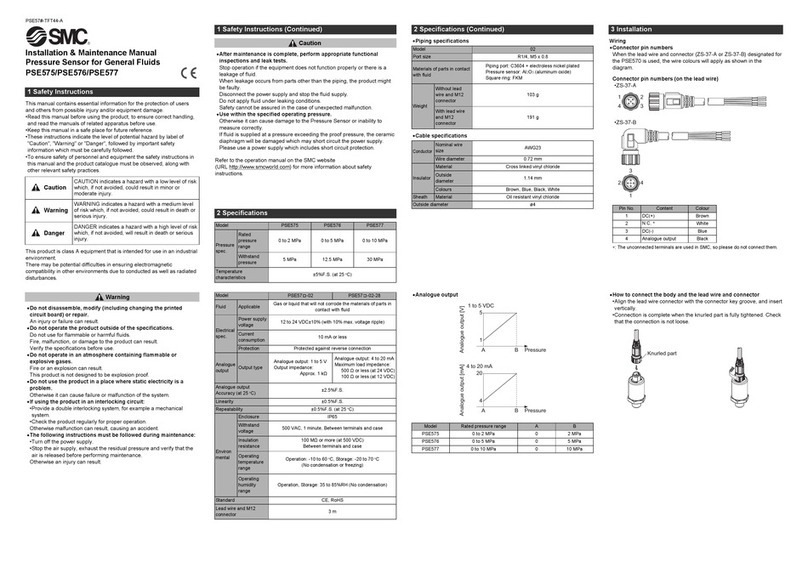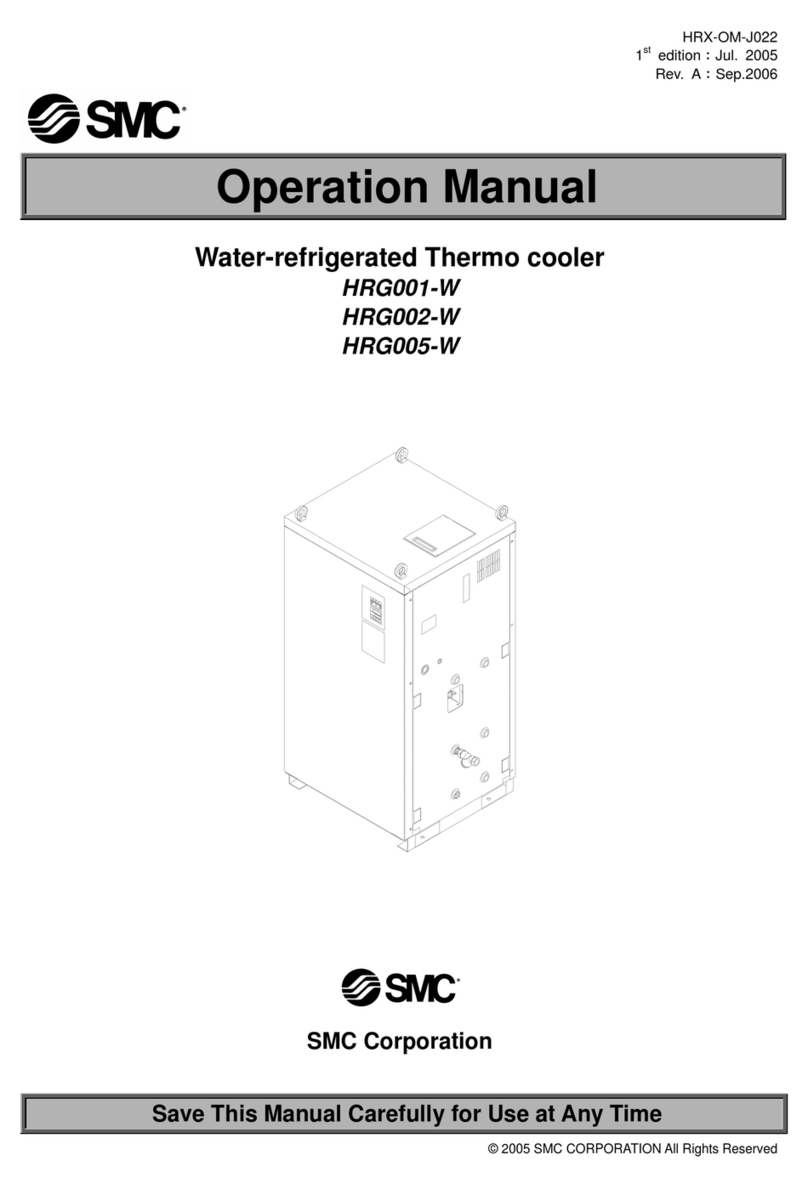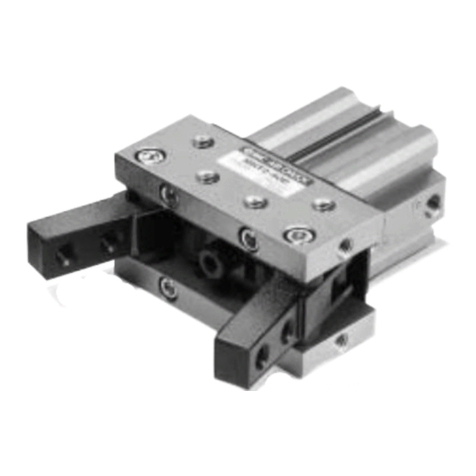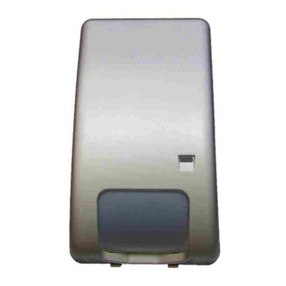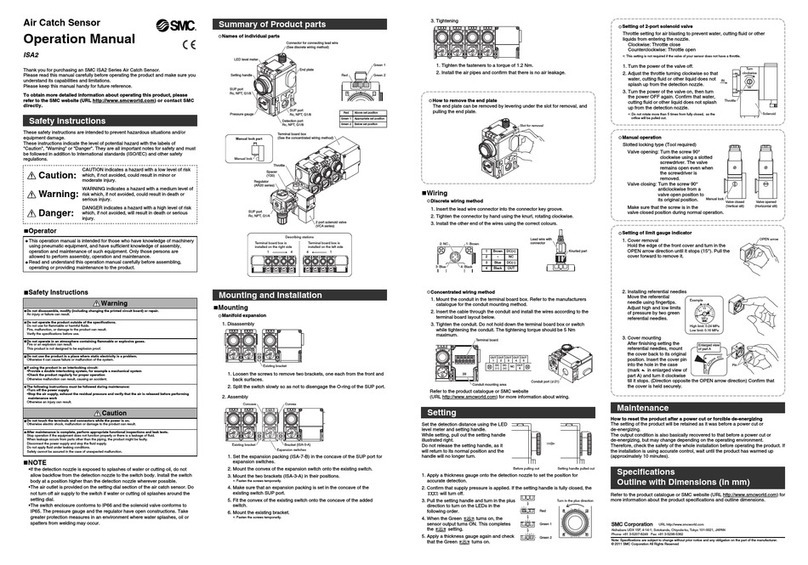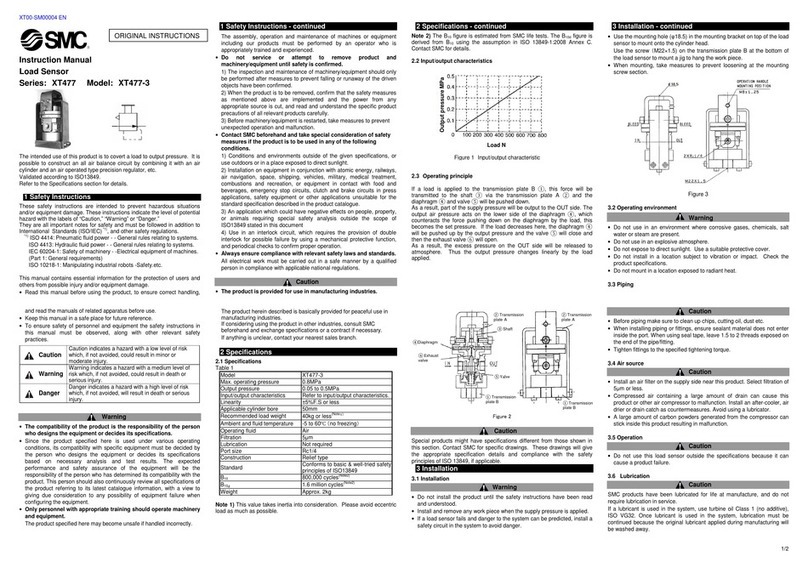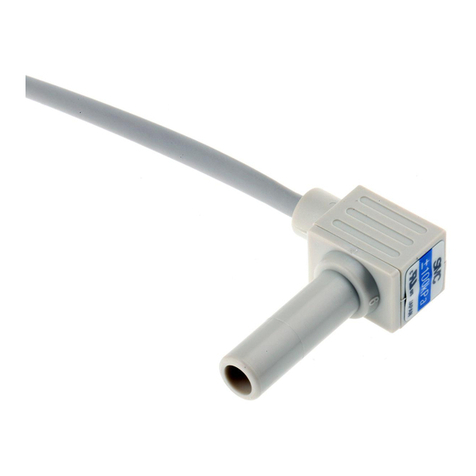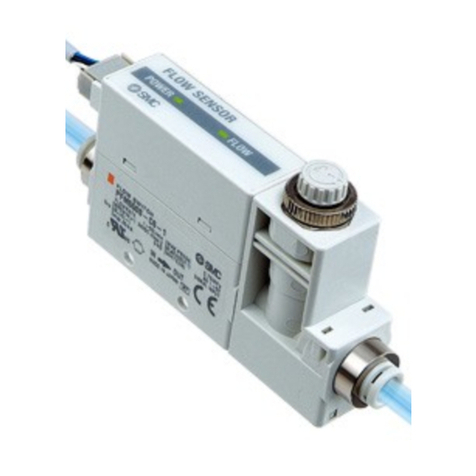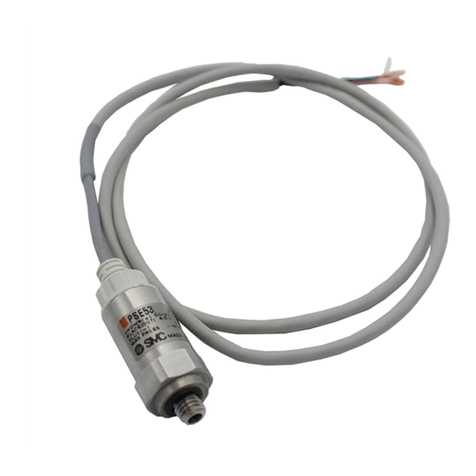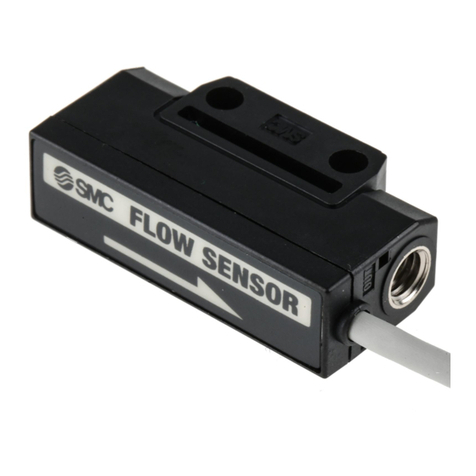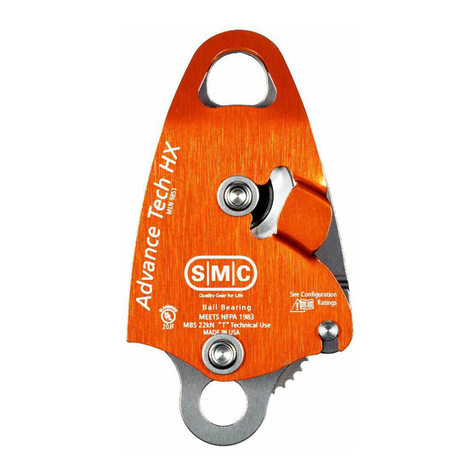
XT477-SMU01EN
Page 1 of 2
Instruction Manual
Load Sensor
Series: XT477 Model: XT477-4-X2
The intended use of this product is to covert a load to output pressure.
It is possible to construct an all air balance circuit by combining it with
an air cylinder and an air operated type precision regulator, etc.
Validated according to ISO 13849, see section 2.
1 Safety Instructions
These safety instructions are intended to prevent hazardous situations
and/or equipment damage. These instructions indicate the level of
potential hazard with the labels of “Caution”, “Warning” or “Danger”.
They are all important notes for safety and must be followed in addition
to International Standards (ISO/IEC)*1), and other safety regulations.
*1) ISO 4414: Pneumatic fluid power - - General rules relating to
systems.
ISO 4413: Hydraulic fluid power - - General rules relating to
systems.
IEC 60204-1: Safety of machinery - -Electrical equipment of
machines. (Part 1: General requirements)
ISO 10218-1: Manipulating industrial robots -Safety.etc.
This manual contains essential information for the protection of users
and others from possible injury and/or equipment damage.
Read this manual before using the product, to ensure correct
handling, and read the manuals of related apparatus before use.
Keep this manual in a safe place for future reference.
To ensure safety of personnel and equipment the safety instructions
in this manual must be observed, along with other relevant safety
practices.
Caution indicates a hazard with a low level of risk
which, if not avoided, could result in minor or
moderate injury.
Warning indicates a hazard with a medium level
of risk which, if not avoided, could result in death
or serious injury.
Danger indicates a hazard with a high level of risk
which, if not avoided, will result in death or
serious injury.
Warning
The compatibility of the product is the responsibility of the
person who designs the equipment or decides its specifications.
Since the product specified here is used under various operating
conditions, its compatibility with specific equipment must be decided
by the person who designs the equipment or decides its
specifications based on necessary analysis and test results. The
expected performance and safety assurance of the equipment will be
the responsibility of the person who has determined its compatibility
with the product. This person should also continuously review all
specifications of the product referring to its latest catalogue
information, with a view to giving due consideration to any possibility
of equipment failure when configuring the equipment.
Only personnel with appropriate training should operate
machinery and equipment.
1 Safety Instructions - continued
The product specified here may become unsafe if handled
incorrectly.
The assembly, operation and maintenance of machines or equipment
including our products must be performed by an operator who is
appropriately trained and experienced.
Do not service or attempt to remove product and
machinery/equipment until safety is confirmed.
1) The inspection and maintenance of machinery/equipment should
only be performed after measures to prevent falling or runaway of the
driven objects have been confirmed.
2) When the product is to be removed, confirm that the safety
measures as mentioned above are implemented and the power from
any appropriate source is cut, and read and understand the specific
product precautions of all relevant products carefully.
3) Before machinery/equipment is restarted, take measures to
prevent unexpected operation and malfunction.
Contact SMC beforehand and take special consideration of
safety measures if the product is to be used in any of the
following conditions.
1) Conditions and environments outside of the given specifications, or
use outdoors or in a place exposed to direct sunlight.
2) Installation on equipment in conjunction with atomic energy,
railways, air navigation, space, shipping, vehicles, military, medical
treatment, combustions and recreation, or equipment in contact with
food and beverages, emergency stop circuits, clutch and brake
circuits in press applications, safety equipment or other applications
unsuitable for the standard specification described in the product
catalogue.
3) An application which could have negative effects on people,
property, or animals requiring special safety analysis outside the
scope of ISO 13849 described in this document.
4) Use in an interlock circuit, which requires the provision of double
interlock for possible failure by using a mechanical protective
function, and periodical checks to confirm proper operation.
Always ensure compliance with relevant safety laws and
standards.
All electrical work must be carried out in a safe manner by a qualified
person in compliance with applicable national regulations.
Caution
The product is provided for use in manufacturing industries.
The product herein described is basically provided for peaceful use in
manufacturing industries.
If considering using the product in other industries, consult SMC
beforehand and exchange specifications or a contract if necessary.
If anything is unclear, contact your nearest sales branch.
2 Specifications
2.1 General Specifications
Input/output characteristics
Applicable cylinder diameter
Ambient and fluid temperature
-5 to +60 °C (no freezing)
5 μm filtration or smaller (Refer to 3.4)
Conforms to basic and well-tried safety
principles of ISO13849-2:2012
1.58 million cycles(Note2)
Table 1
2 Specifications –continued
Notes:
Note 1) This value takes inertia into consideration. Please avoid
eccentric load as much as possible.
Note 2) Under SMC test conditions. The B10 figure is estimated from
SMC life tests. The B10Dfigure is derived from B10 using the
assumption in ISO 13849-1:2015 Annex C. Contact SMC for
details.
2.2 Input/output characteristics
Figure 1
2.3 Operating principle
If a load is applied to the transmission plate B ①, this force will be
transmitted to the shaft ③via the transmission plate A ②and the
diaphragm ④and valve ⑤will be pushed down.
As a result, part of the supply pressure will be output to the OUT side.
The output air pressure acts on the lower side of the diaphragm ④,
which counteracts the force pushing down on the diaphragm by the
load, this becomes the set pressure. If the load decreases here, the
diaphragm ④will be pushed up by the output pressure and the valve
⑤will close and then the exhaust valve ⑥will open.
As a result, the excess pressure on the OUT side will be released to
atmosphere. Thus the output pressure changes linearly by the load
applied.
Figure 2
Caution
Special products might have specifications different from those shown
in this section. Contact SMC for specific drawings. These drawings will
give the appropriate specification details and compliance with the safety
principles of ISO 13849, if applicable.
3 Installation
3.1 Installation Warning
Do not install the product unless the safety instructions have been
read and understood.
Install and remove any work piece when the supply pressure is
applied.
If a load sensor fails and danger to the system can be predicted,
install a safety circuit in the system to avoid danger.
Use the mounting hole (φ19) in the mounting bracket on top of the
load sensor to mount onto the cylinder head.
3 Installation –continued
Use the screw (M22×1.5) on the transmission plate B at the bottom
of the load sensor to mount a jig to hang the work piece.
When mounting, take measures to prevent loosening at the mounting
screw section.
Figure 3
3.2 Environment Warning
Do not use in an environment where corrosive gases, chemicals, salt
water or steam are present.
Do not use in an explosive atmosphere.
Do not expose to direct sunlight. Use a suitable protective cover.
Do not install in a location subject to vibration or impact. Check the
product specifications.
Do not mount in a location exposed to radiant heat.
3.3 Piping Caution
Before piping make sure to clean up chips, cutting oil, dust etc.
When installing piping or fittings, ensure sealant material does not
enter inside the port. When using seal tape, leave 1.5 to 2 threads
exposed on the end of the pipe/fitting.
Tighten fittings to the specified tightening torque.
3.4 Air source Caution
Install an air filter on the supply side near this product. Select filtration
of 5μm or less.
Compressed air containing a large amount of drain can cause this
product or other air compressor to malfunction. Install an after-cooler,
air drier or drain catch as countermeasures. Avoid using a lubricator.
A large amount of carbon powders generated from the compressor
can stick inside this product resulting in malfunction.
3.5 Operation Caution
Do not use this load sensor outside the specifications because it can
cause a product failure.
plate B
Operation handle
Mounting position
